News
Diving Loch Long
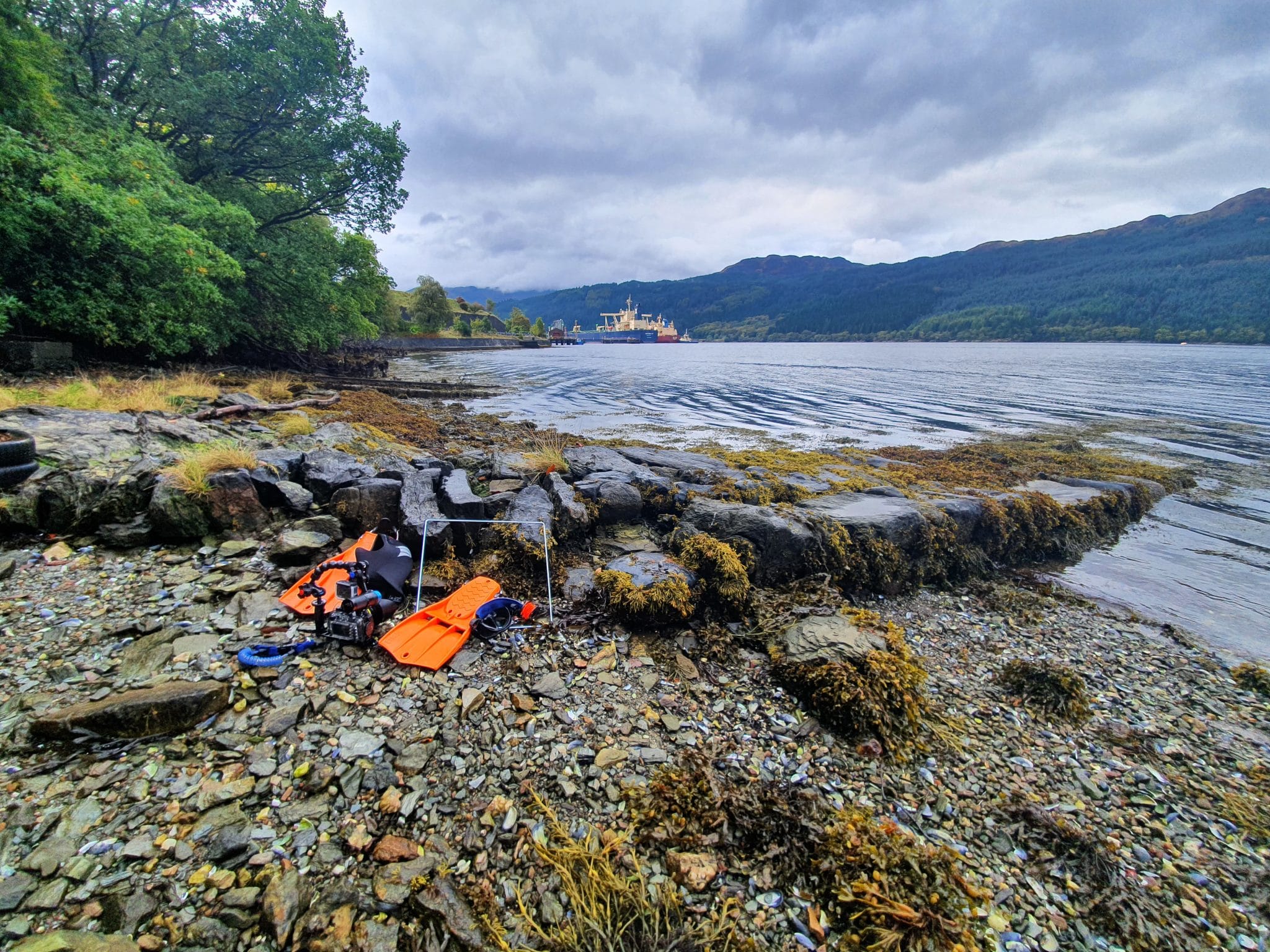
I’m not sure why, maybe it’s just me, but I think sometimes we overlook what we have right on our doorsteps. For some of us we can become indifferent, and in some cases outright loathsome, to things we see and experience regularly, not always fully appreciating what we have close by. When it comes to diving on the west coast of Scotland I think is particularly relevant in regards to Loch Long.
If you’re a diver from Scotland (who dives here obviously) it’s pretty much guaranteed you’ll have dived in Loch Long, whether it be for training/courses or “fun” dives. In fact, I think it’s safe to say if you’re a regular diver here, you’re probably a little fed up of diving in Loch Long. But when I sit down and really think about it, I begin to wonder if we actually take the loch for granted and don’t appreciate it as much as we should!
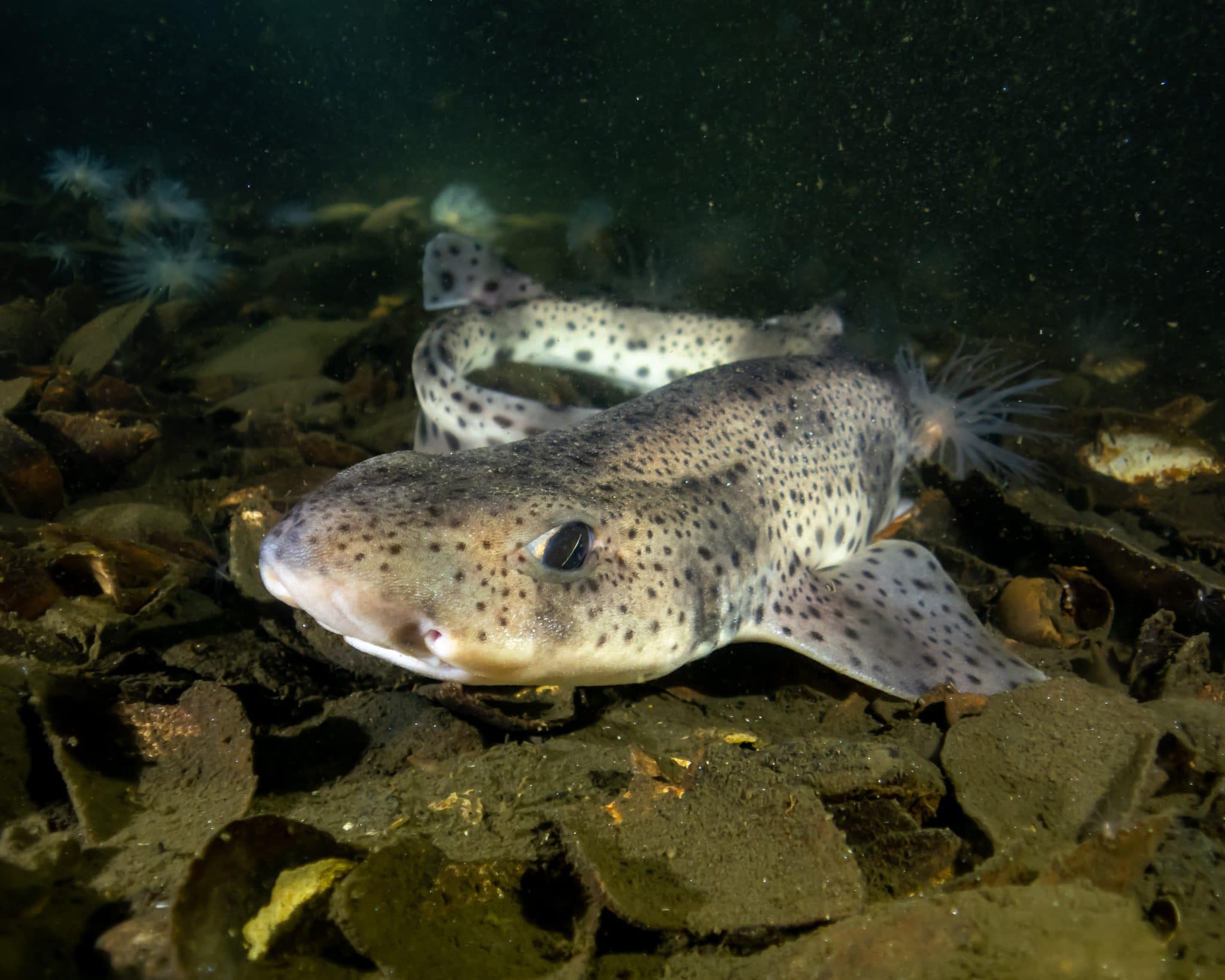
Although at 20 miles long Loch Long doesn’t get its name from its length, actually Loch Long in Gaelic translates to Ship Lake and the name dates back to 1263 when the Vikings saw Arrochar, at the top of the loch, as a key target from which they could drag their ships across land to attack the unprotected settlements of Tarbet.
Anyway… brief history lesson over, back to diving. If you do a quick check of Finstrokes you’ll see that there is no less than THIRTEEN dive sites in Loch Long, that’s a staggering number in one body of water and all within an hour’s drive from Glasgow City Centre. I’ll be honest, until I started researching this piece I didn’t actually realise there were so many, I’ll hold my hands up, I’m no expert by any stretch of the imagination and I’ve certainly not dived all thirteen.
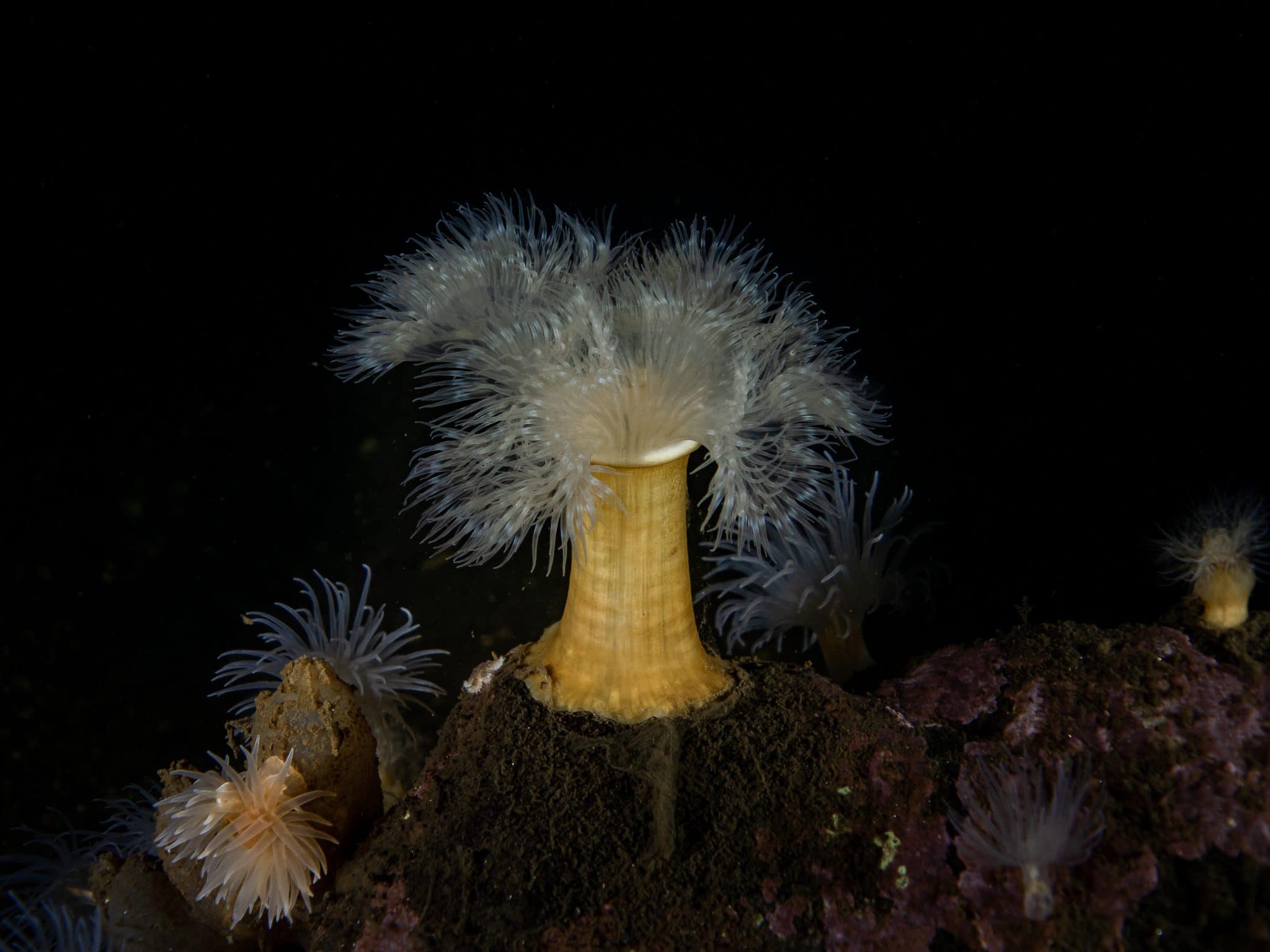
Of the sites, in my opinion, there are definitely four that stand out as and are definitely worth a visit if you are up this way.
As with sites around the country, every club/organisation/dive school seem to have their own names for each one, but I’ll try and give as many names as possible for each site.
Finnart/A-Frames
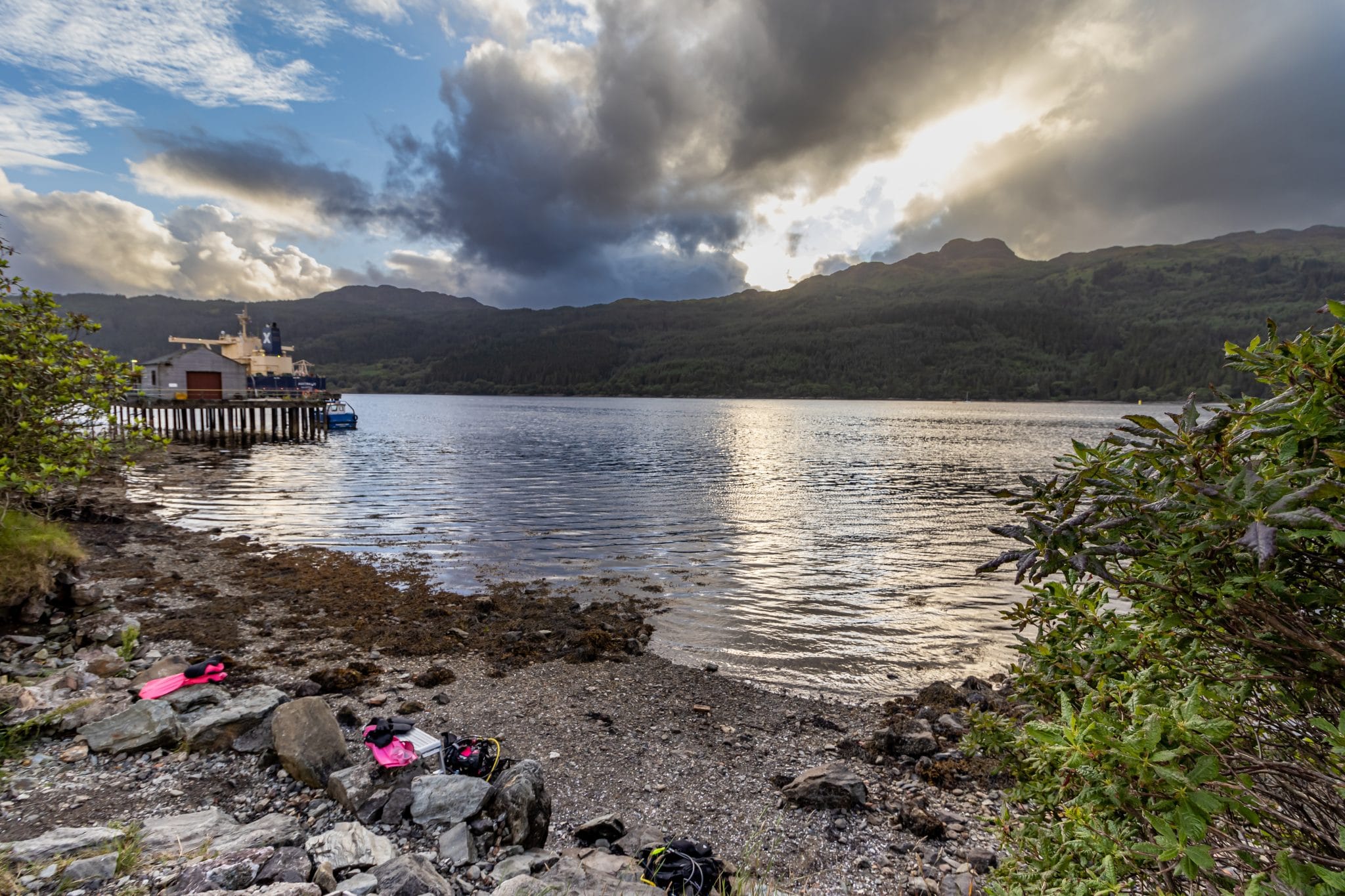
Finnart (sometimes referred to as A-Frames) is probably the most popular site in Loch Long, probably the most popular site in Scotland, and if not the number one, it’s definitely up there. Finnart was built by the Americans during the Second World War to offer a deep water oil terminal within the defensive ring of the Clyde.
Chances are if you’ve taken part in any training or courses here you’ll have at least done one dive at the ever popular A-Frames, but it’s not just for trainees. At A-Frames you’re met with an excellent carpark (which gets VERY busy in the summer weekends) and an entry that’s pretty good by many respects, though the small scramble down to the beach does require a little bit of care.
Once you dive beneath the surface you’re met with an extremely diverse site that has enough to satisfy the newest recruits taking their first breaths underwater, right the way up to the most hard-core experienced divers. With wreckage from the old pier to be found around 8 to 12m there is a huge amount of life clinging to it giving first time divers a superb introduction to the site. If depth isn’t really your thing, then you could spend a full dive in and around this debris field zig-zagging the slope and exploring all the nooks and crannies that are home to squat lobsters, edible crabs, velvet swimming crabs, the list goes on.
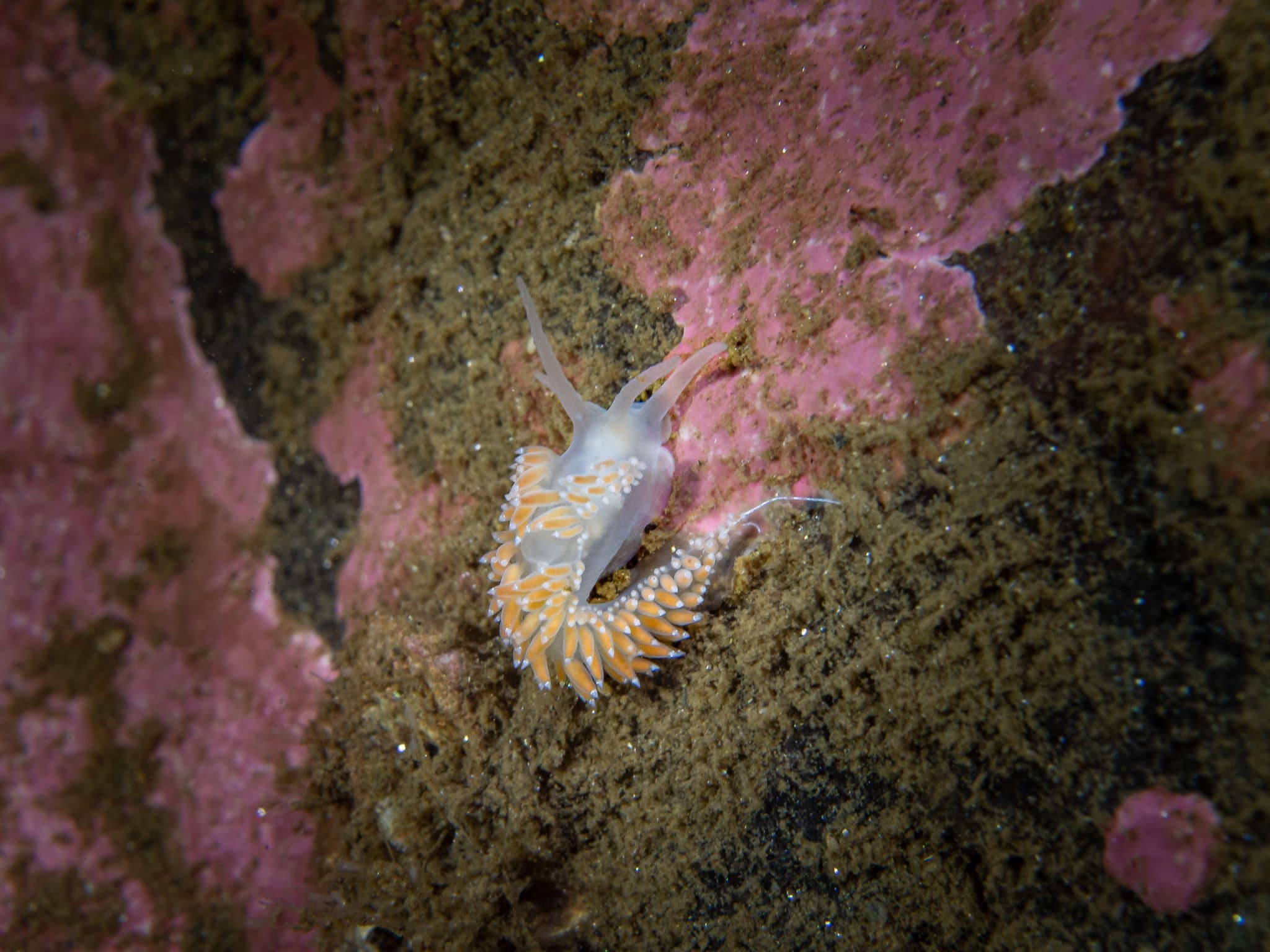
Diving a little deeper (below 20m) though you come across the great A-Frames, remnants of the old pier that lend their name to the site. Out of the gloom these huge structures very often suddenly appear (may have swam into them on one or two occasions… ) and you are welcomed by a vibrant cacophony of life. The frames are covered in anemones, star fish, deadmens fingers and if you’re really lucky the odd nudibranch! A dive around them never fails to disappoint and if you get a day with particularly good visibility the view from the seabed up to the top of them is truly spectacular.
If you are particularly keen to log some deeper dives, there is the option to head out further into the loch from the shore here and it’s easy enough to get +40m and its been known to see some pretty spectacular fireworks anemones at these depths.
29 Steps
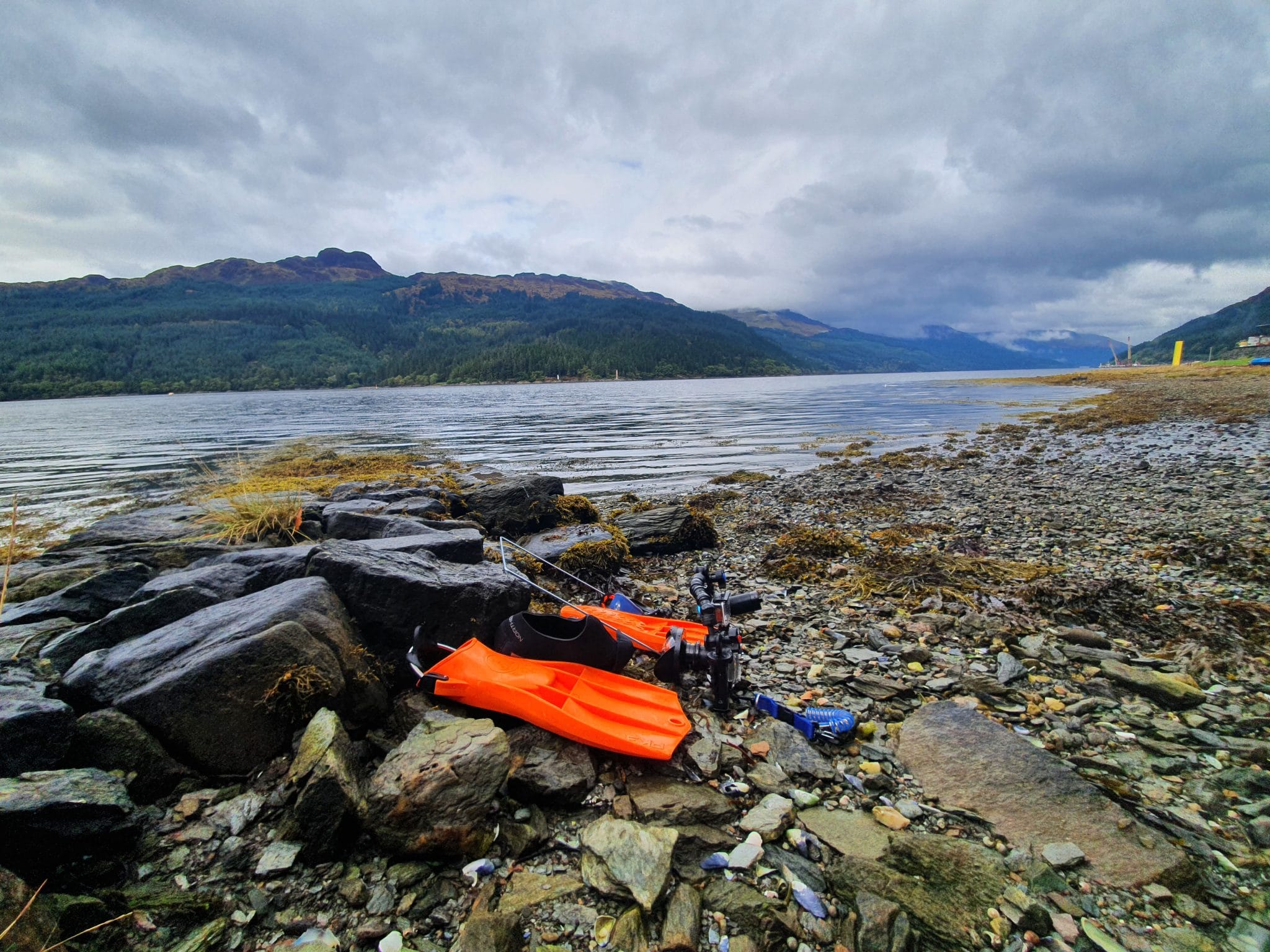
Just north of Finnart is the next dive site on our tour of Loch Long, in fact when I say just north, actually you can swim to it from Finnart… I may have got lost once and ended up at here, but that’s another story. Seen by regulars as more of a training site, and albeit maybe not quite as exciting as A-Frames, 29 Steps does offer a nice dive with a very easy entry and exit and pretty simple navigation.
Getting the name from the 29 steps (in fact there’s actually now only 26) that lead down to the beach from the road, the main hazard here is the steps themselves that can be quite slippy when wet, but apart from that once you reach the bottom you are met with a rather nice wee beach with the remnants of an old jetty stretching out into the water. The old jetty wall offers a convenient perch for dive gear and there is even a wee sheltered archway that can be used to escape the rain on a dreich Scottish dive day.
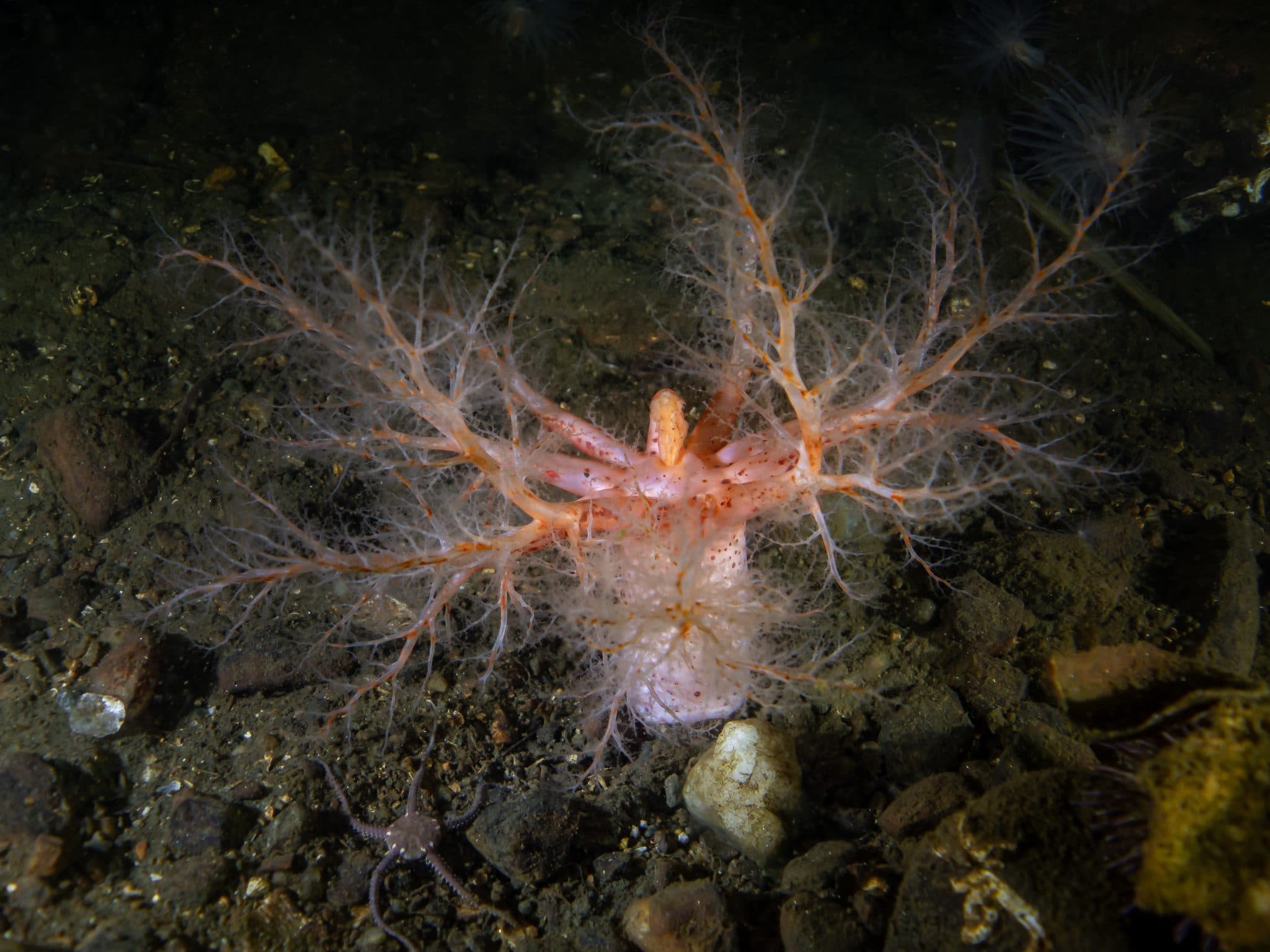
The main dive here is straight out from the beach down a gently slope to platform at around 9m which offers an excellent base for doing training and skills. Although not as much life on the platform (well it is regularly used for training), velvet and edible crabs can be found in and around it with a few other bits and pieces as well. From the Platform there is two options.
Option one is to follow the slope downwards as far as you like, where again, you will find the usual life of crabs, squat lobsters, starfish and even the odd fireworks anemone and langoustine at depth and then turning left to zig zag back up.
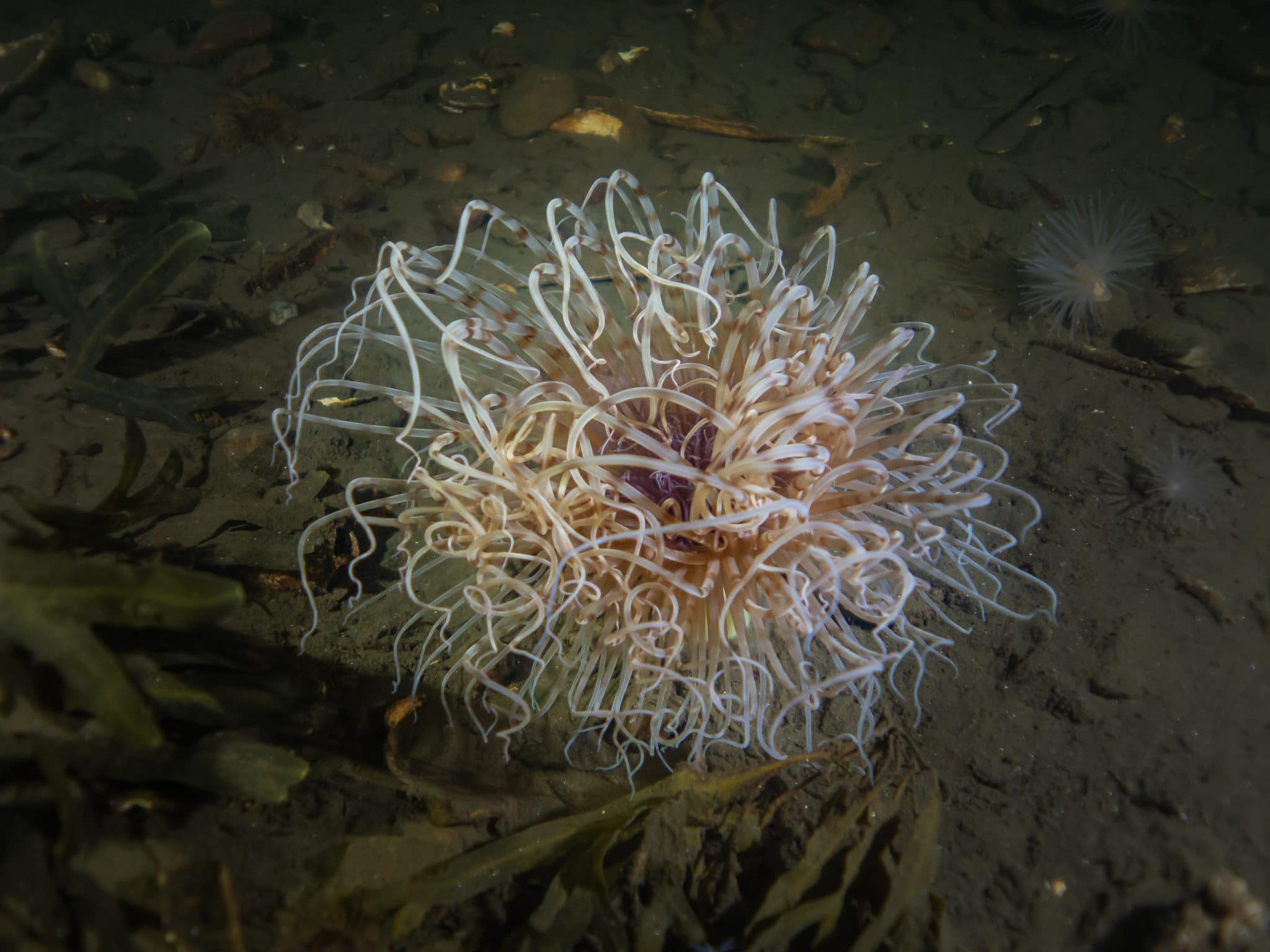
Option two, which can also be done along with option one is to continue down a little deeper from the platform and then bear left perpendicular to the slope. Finning along you will eventually come to the “wreck” of an old rowing boat which offers a nice habitat for the usual critters and even, if you’re really lucky, the odd flatfish in amongst the debris. On the way back to the entry/exit point, there is also an “artificial” reef of some old discarded dive tanks in the sand that also allows for a wee bit on investigation.
Maybe not quite as exciting a dive site as its near neighbour Finnart, 29 Steps is sometimes undervalued and does offer a nice alternative if you come to find A-Frames “mobbed” when you arrive, as it often can be at weekends.
Twin Piers
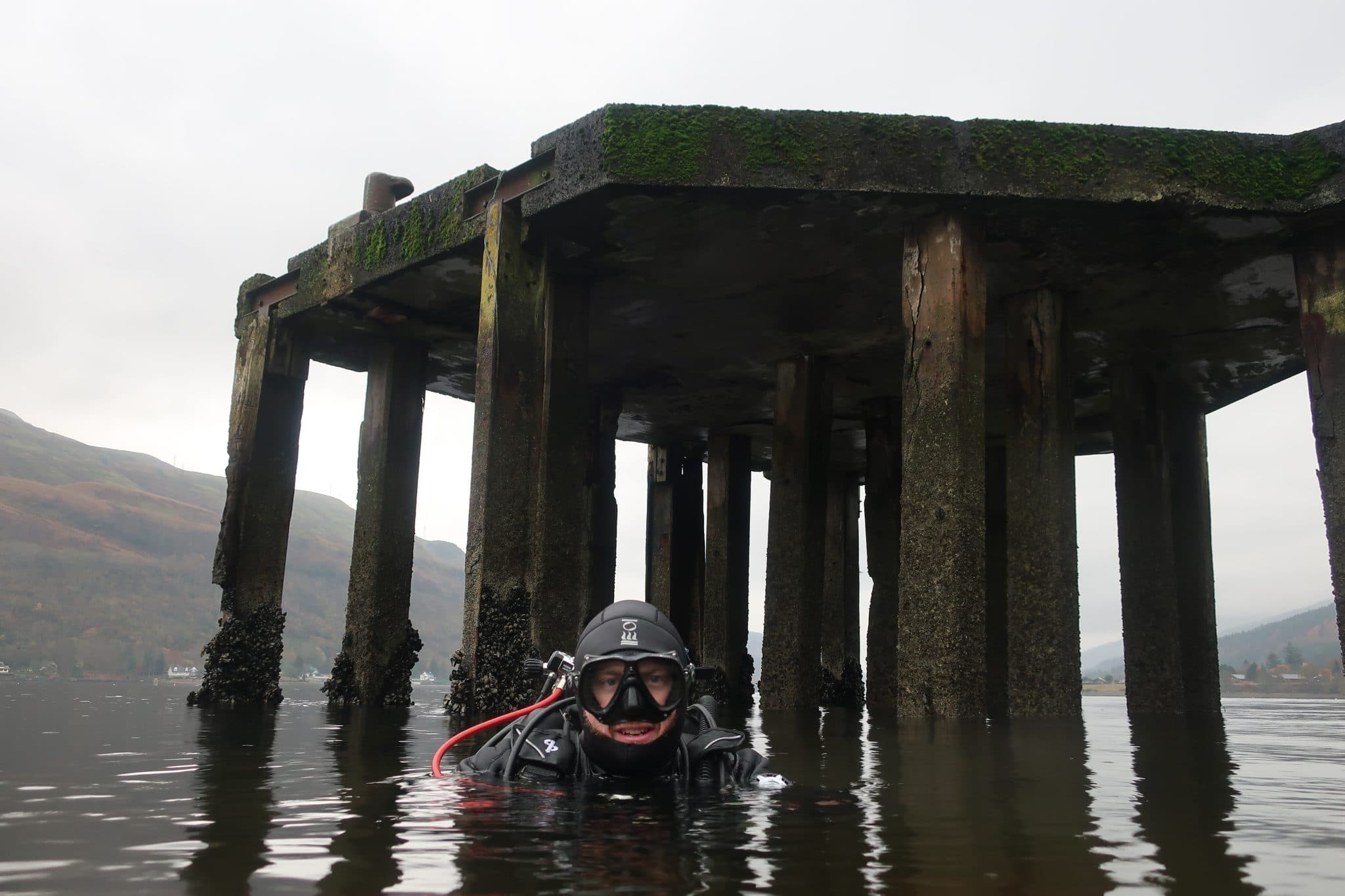
Heading to the top of the loch and round onto the west side you eventually come to the dive site Twin Piers. Once you arrive it’s pretty obvious where the name comes from. Sitting just off the beach is the remains of, funnily enough, two piers. Lying in the shadow of one of Scotland’s most popular hill walks the Cobbler, both Twin Piers (and Conger Alley) can very often offer sights just as spectacular beneath the waves as you can expect from the mountain that towers over it.
Parking for Twin Piers can be a little bit tricky if you happen to turn up on a particularly busy day. This requires driving ever so slightly past actual entry point and onto the grass verge on the side. This also leads to one of the main hazards of Twin Piers the extremely busy, and fast, road it sits on. There is an excellent path which leads back to the entry, but I would still strongly advise care be taken when walking to the site with heavy gear as both lorries and coaches often travel at speed along the road. The beach itself actually sits on a lower level to the road/parking area and so the second main hazard of the site is found. A ladder has been place and secured from the original “entrance” of the pier and a handle has also been drilled into the wall to help with the climb down. In all honest it is not a major issue, but is still worth mentioning.
Ok, so onto the diving! Twin Piers is an excellent site for divers of all abilities and navigation is pretty straight forward. From the beach head straight out between the two piers and drop down. On the slope you’ll be met with a carpet of discarded bivalve shells which is pretty impressive in its own right. Continue down the slope to anywhere between 10 to 15m or so and then bear left perpendicular to the slope. If you are lucky you will eventually hit the chassis and axels of an old truck which fell off the pier.
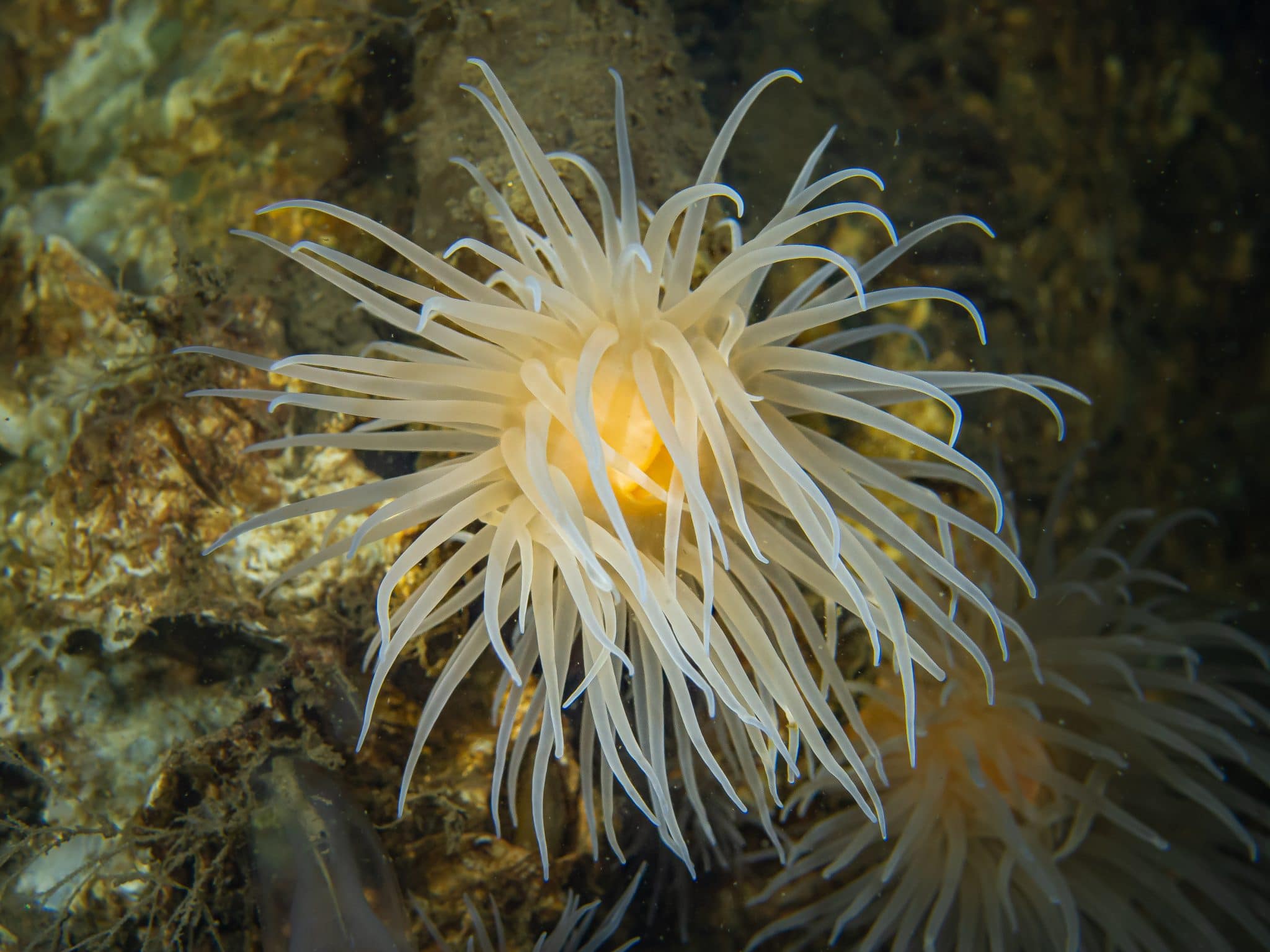
From here I’d suggest heading down to between 15 and 20m and continue to swim perpendicular to the slope until you eventually reach a rather excellent rocky reef. The boulders here are huge and offer a fantastic habitat to a whole array of life from the usual crabs, squat lobsters, anemone, starfish, deadmens fingers, etc. But the real attraction of Twin Piers is the possibility of seeing conger eels and even the odd lobster. These make their homes in the larger cracks in, around and under the huge boulders. Zig Zag up the reef and then once you’ve reached the time for a return simply retrace your steps… or should that be finstrokes? Depending on the tide state, if you come up to around 6m and swim back along you can’t fail to hit the legs of the piers, which offer a rather nice final exploration of the site during your safety stop.
On a nice day (both above and below the water), with the sun breaking through the water around the piers themselves are absolutely spectacular. The legs are awash with vibrant colourful life ranging from starfish to anemones and even the odd nudibranch if you’re lucky!
Conger Alley
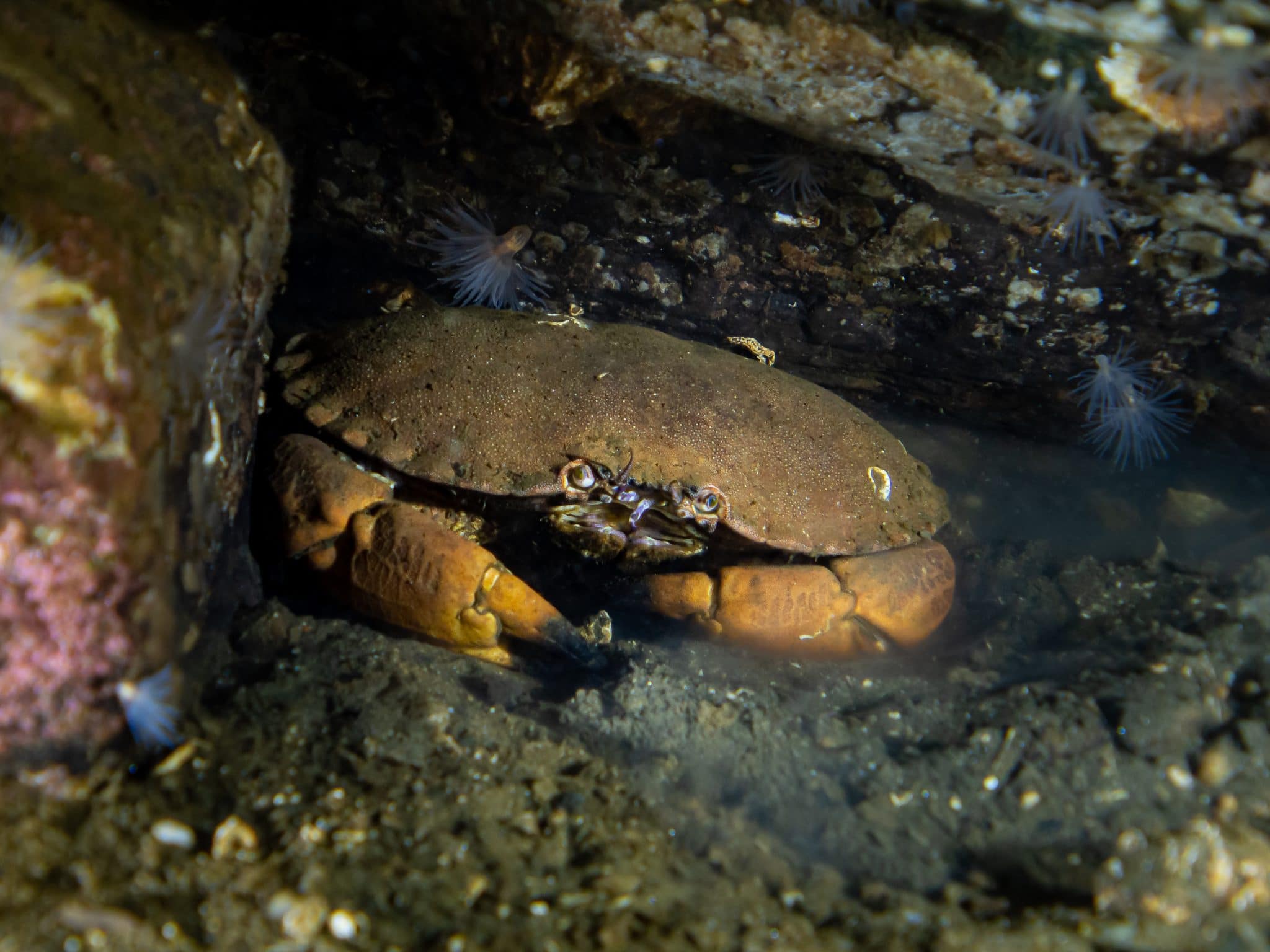
Wonder what we might find here? Heading just a couple of minutes south down the road from Twin Piers along the west side of Loch Long you eventually come to my favourite dive site in the loch. Now blink here and you could very well miss the entry and although I did mention the road as a hazard at Twin Piers, on the grand scheme of things it wasn’t a huge concern, however here at Conger Alley you do need to really be careful.
Parking for the dive site is actually on the opposite side of the road to the loch in what can only be loosely described as a small muddy layby. Now at this particular spot there is only really enough room for three cars at a push, but on the way to the site you’ll have passed a bigger, “proper” layby that can be used instead, however parking here will involve a wee bit of a longer walk back to the site, but it is worth it! Crossing the busy road does require care though so I would strongly suggest carrying your kit down to the beach and getting kitted up here as opposed to at the car and then crossing the road with hood, etc on. Thankfully the beach itself offers some rather strategically place rocks that can be used to prop gear on and even a very handy seawall that helps “step into” a twinset.
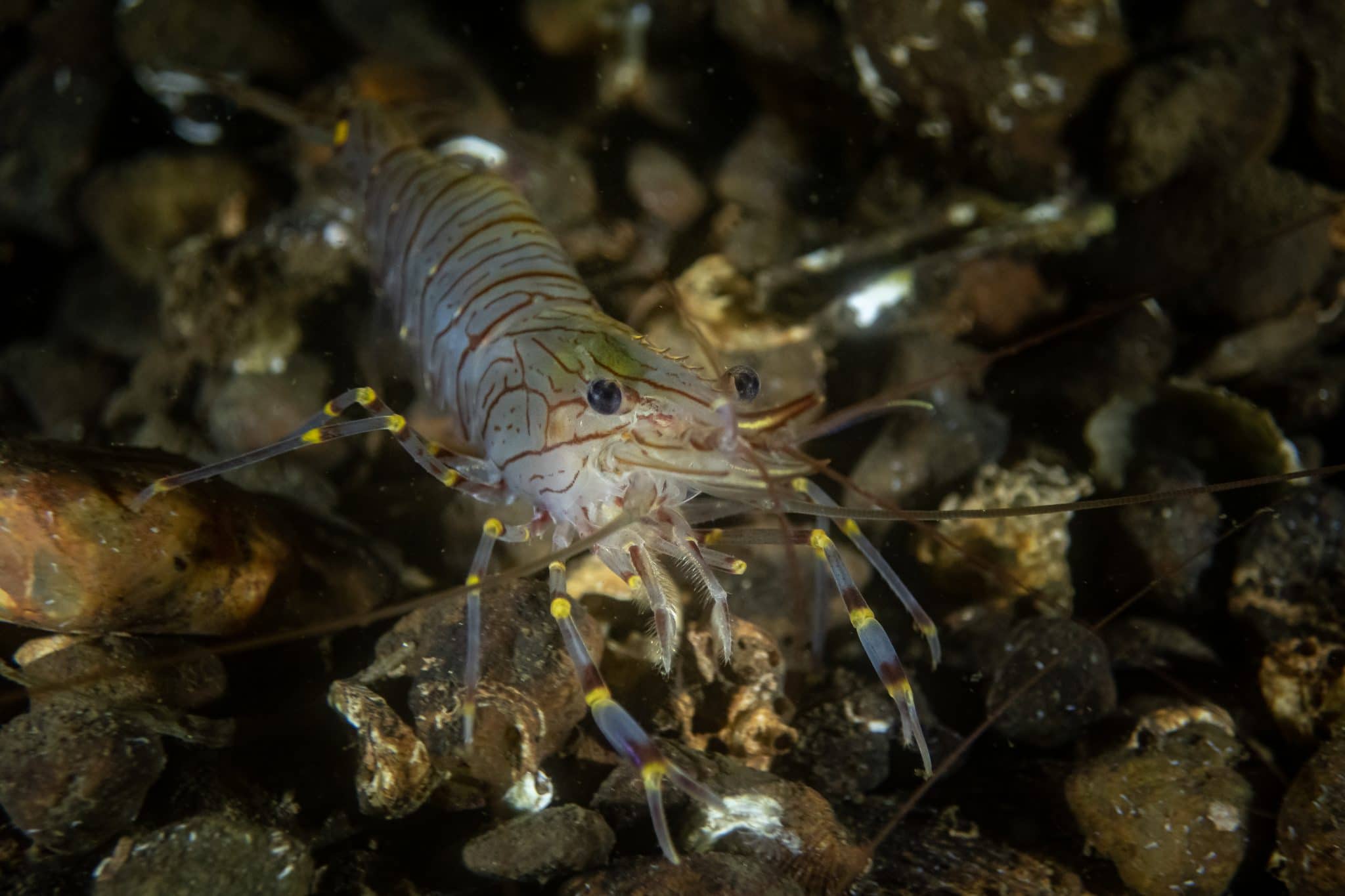
Again like all the sites I’ve discussed the entry is really easy here. Simply walk into the water, drop down and follow the slope to I would suggest, about 12 to 15m and swim left for around 4mins. You eventually come to the edge of a rather large rocky reef and from here it is totally up to yourself how deep you want to go. If your certification allows it I would recommend dropping down the reef to around 26 to 30m and then slowly zig zagging your way back up it taking your time to look in all the cracks and crevices.
I genuinely don’t think I’ve ever had a bad dive at Conger Alley and the life on the reef is unbelievable! There’s obviously the usual crabs, starfish, anemones, etc, but as the name might suggest there is a really good number of congers, and lobsters, to be found in the larger holes. Take your time to search each as they can be a little shy, but they are there. It’s also not uncommon to find the odd octopus lurking around on the rocks, so look carefully.
There’s also an abundance of fish as well from flatfish to sometimes rather colourful wrasse. Again, like at Twin Piers, gradually come up the reef and then once you’ve reached the end head back along the slope in the opposite direction to you came and you’ll eventually reach the exit.
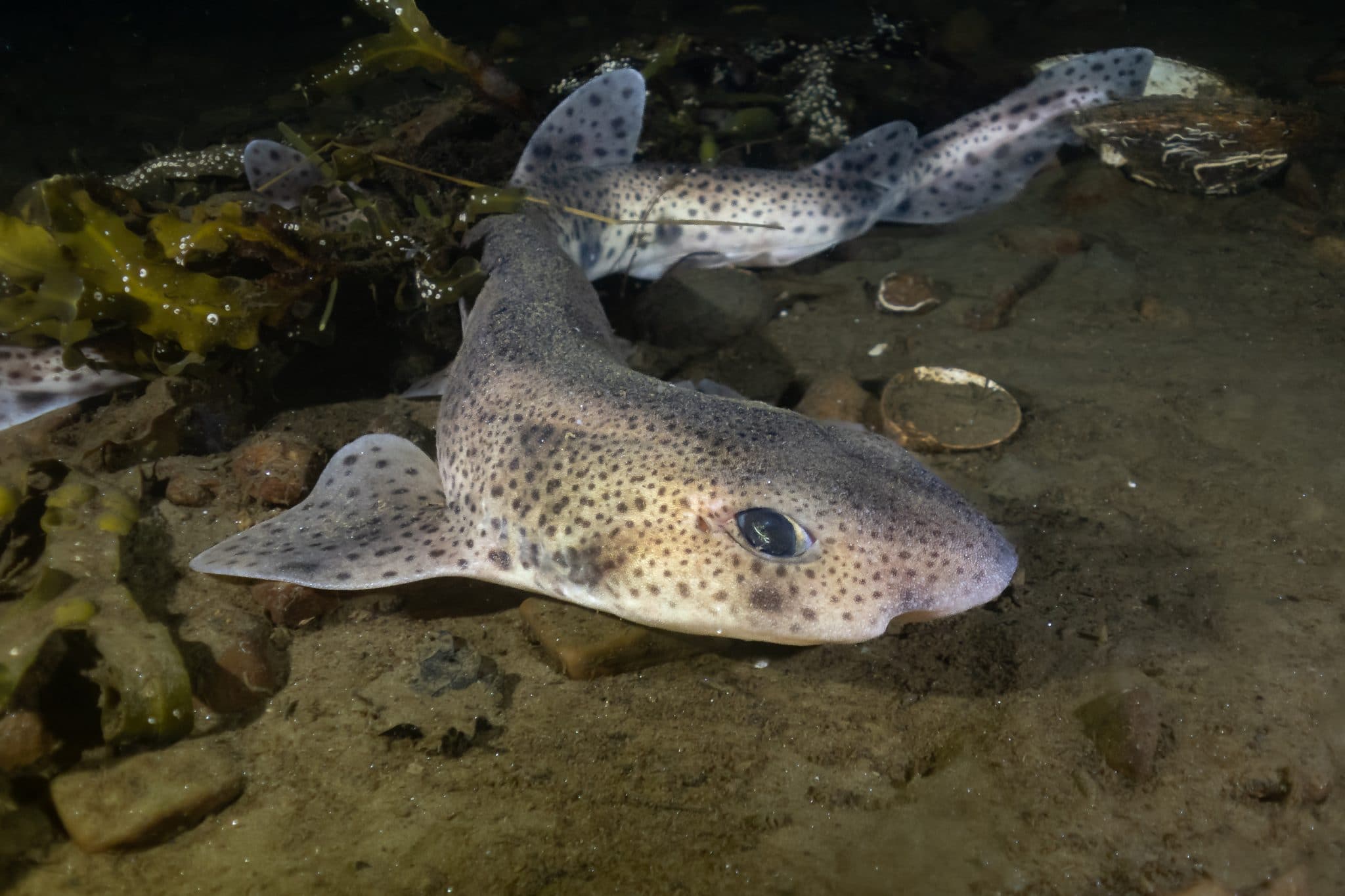
Obviously these four sites are probably the most popular and accessible to the vast majority of divers, but they really only offer a small taste of what this 20 mile loch has to offer. From the shore there is up to approximately nine dives to choose from on Finstrokes and if you have access to a boat, or are able to book onto a charter such as Wreckspeditions based in Dunoon, there is the potential for even more sites to be discovered.
With such close proximity to Glasgow and situated just next to Loch Lomond, and all the amenities it has to offer, there is also the possibility of overnight stays in campsites and lodges in the surrounding area for those coming from further afield. Loch Long offers divers an abundance of choice within easy reach that can sometimes can be overlooked and underappreciated.
For more from Ross, follow him on Instagram @underwater.ross and on Twitter @outdoorsross.
Gear News
Introducing the TR-80, IR-50 and CS-30 Regulators from DYNAMICNORD

Whether you are a beginner or a professional diver – with the three new main regulators from DYNAMICNORD, everyone will find their favourite regulator. They all look super stylish.
Excellent performance with the TR-80
Quality and performance are the be-all and end-all for regulators. It is not for nothing that the TR stands for Tec Reg. The innovative design of the TR-80 guarantees absolute reliability – even in ice-cold waters.

Perfect breathing effort at 0.8 J/l / certified for diving in waters below 10 degrees / structural design made of solid brass for best cold protection / membrane-compensated design with dry seal of the first stage / reduced exhalation effort thanks to optimized exhalation membrane and bubble deflector / adjustable Venturi (dive/predive) and adjustment knob for individual inhalation comfort / innovative design of the front cover prevents free-flow in strong currents or when diving with scooters / design made of sandblasted brass, matt chrome finish / 2 HP and 4 LP outlets / mouthpiece made of high-quality, anti-allergic silicone for maximum comfort.


Amazing underwater adventures with the IR-50
The IR-50 is the top regulator for advanced and experienced divers. Natural breathing is the essence of this regulator.

Ideal breathing effort at 0.8 J/l /certified for diving in waters below 10 degrees / compensated membrane / adjustable venturi (dive/predive) and adjustment knob for individual inhalation comfort/ outlet valve and deflector for minimum exhalation effort and reduction of bubbles on the face / design made of sandblasted brass, matt chrome finish / 2 HP and 4 NP outlets / mouthpiece made of high-quality, anti-allergic silicone for maximum comfort.


The Workhorse – our CS-30
For diving centres and diving beginners – the workhorse stands for strong construction, reliability and robustness. Perfect for your training.

Optimal breathing effort at 0.8 J/l /recommended for diving in waters above 10 degrees / non-compensated piston / adjustable venturi (dive/predive) / outlet valve and deflector for minimum exhalation effort and reduction of bubbles on the face / design made of sandblasted brass, matt chrome finish / 1 HP and 3 NP outlets / mouthpiece made of high-quality, anti-allergic silicone for maximum comfort.


Octopus OP-30
The OP-30 is the ideal addition to all DYNAMICNORD regulators. It is identical in construction to the CS-30.

The TR-80, IR-50, CS-30 (DIN & INT) regulators and the Octopus OP-30 are available from DYNAMICNORD dealers and in the online store.
DYNAMICNORD – Your Outdoor Companion.
Marine Life & Conservation
Paul Watson Released as Denmark Blocks Japan’s Extradition Bid

Renowned anti-whaling activist Paul Watson has been released from custody in Greenland after spending five months in detention. Denmark’s Justice Ministry rejected Japan’s request for his extradition, citing insufficient guarantees that his time already served in custody would be credited against any potential sentence.
The 74-year-old Canadian-American was arrested on July 21 in Nuuk, Greenland’s capital, when his ship docked to refuel. His arrest was based on a 2012 Japanese warrant related to a 2010 encounter in Antarctic waters. Japan alleged Watson obstructed operations and caused damage to a whaling research ship during efforts to disrupt illegal whaling. Watson has consistently denied these claims, maintaining his commitment to marine conservation.
Denmark, which oversees extradition matters for Greenland, concluded that while the legal conditions for extradition were met, the lack of assurances from Japan regarding time-served credit made extradition untenable.
In a video shared by his foundation, Watson expressed gratitude and relief, saying, “After five months, it’s good to be out… and good to know they’re not sending me to Japan.” He added that the most difficult part of his time in custody was being separated from his two young sons.
Watson is a pioneering figure in marine conservation, known for founding the Captain Paul Watson Foundation in 2022 after decades of activism with the Sea Shepherd Conservation Society. His bold efforts to defend marine life have earned him widespread support, including from celebrities and conservationists. His work has also been featured in the acclaimed reality TV series Whale Wars.
Watson’s lawyer, Jonas Christoffersen, praised the decision, stating, “We are happy and relieved that Paul Watson is now free.” He added that Watson is eager to reunite with his family and continue his vital work.
The arrest occurred while Watson’s vessel, the M/Y John Paul DeJoria, was en route to the North Pacific with a team of 26 volunteers to intercept a Japanese whaling ship. His foundation described the arrest as politically motivated and emphasized that Watson’s actions were focused on ending illegal whaling practices.
Japan resumed commercial whaling in 2019 after leaving the International Whaling Commission, asserting that whale meat is a cultural tradition. Conservationists, however, continue to challenge these practices, highlighting their impact on marine ecosystems.
Despite the challenges, Watson remains steadfast in his mission to protect marine life and bring attention to whaling practices. His dedication to ocean conservation has made him a globally respected advocate for the environment.
-

 News2 months ago
News2 months agoIconic SS United States to become the World’s Largest Artificial Reef
-

 News3 months ago
News3 months agoBook Review – 52 Assignments: Underwater Photography
-

 Gear News3 months ago
Gear News3 months agoDYNAMICNORD – New German diving brand enters the British market
-

 News3 months ago
News3 months agoExploring Cenote El Pit: A Diver’s Dream
-

 Gear News3 months ago
Gear News3 months agoTry BARE drysuits (and maybe even win one!) this Friday with Sea & Sea at North West Dive Fest
-

 Marine Life & Conservation3 months ago
Marine Life & Conservation3 months agoBook Review: Coral Triangle Cameos
-

 Blogs2 months ago
Blogs2 months agoDive the Egyptian Red Sea this Autumn with Regaldive
-

 News3 months ago
News3 months ago2024 Ocean Art Underwater Photo Competition Announced















